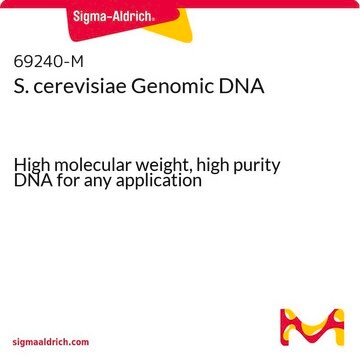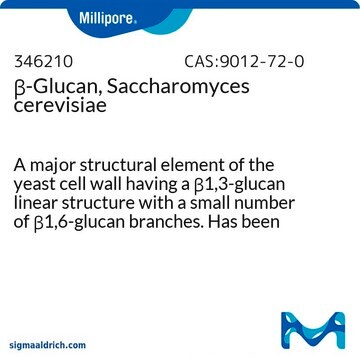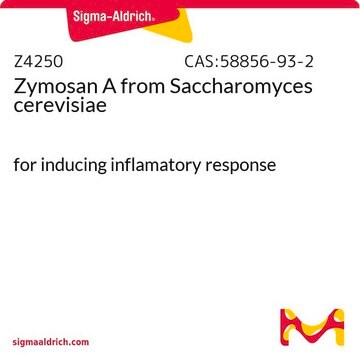This product is specifically prepared to undergo autolysis in aqueous buffer solution at 37°C, optimized for retaining enzyme activity post-drying, though not for cell viability or growth. It serves as an excellent starting point for enzyme extraction processes. For proliferation, Product YSC2 is a viable baker’s yeast, ready to grow once rehydrated, with only about 10% subject to autolysis at the same temperature. It is the preferred option for those looking to cultivate yeast effectively.
YSC1
Yeast from Saccharomyces cerevisiae
Type I
Synonym(s):
(Bakers yeast)
About This Item
Recommended Products
biological source
Saccharomyces cerevisiae
Quality Level
type
Type I
form
powder or solid
application(s)
food and beverages
microbiology
storage temp.
2-8°C
General description
Application
Biochem/physiol Actions
Caution
Preparation Note
Storage Class Code
11 - Combustible Solids
WGK
WGK 3
Flash Point(F)
Not applicable
Flash Point(C)
Not applicable
Personal Protective Equipment
Choose from one of the most recent versions:
Certificates of Analysis (COA)
Don't see the Right Version?
If you require a particular version, you can look up a specific certificate by the Lot or Batch number.
Already Own This Product?
Find documentation for the products that you have recently purchased in the Document Library.
Customers Also Viewed
Protocols
This procedure may be used for the determination of Lyticase activity using Baker’s yeast as the substrate.
-
Hi We would like to expand this yeast in our lab for an experiment. Would you please recommend best growth media for expanding this Yeast.
1 answer-
Helpful?
-
-
What are the differences between YSC1 and YSC2?
1 answer-
YSC1 is dried to prevent enzyme inactivation during enzyme extractions from yeast. On the other hand, YSC2 is fast dried and yields 90% viable cells in solid form. The primary difference lies in the method of preparation, particularly in the drying process.
Helpful?
-
Active Filters
Our team of scientists has experience in all areas of research including Life Science, Material Science, Chemical Synthesis, Chromatography, Analytical and many others.
Contact Technical Service












